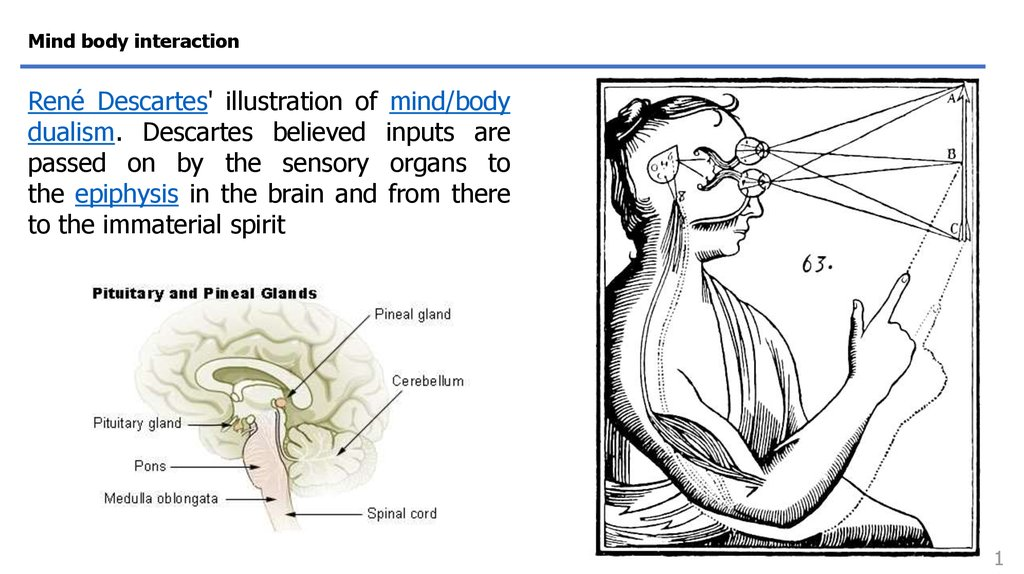Introduction
Cartesian developed the Cartesian Dualistic Theory of Pain to explain the relationship between physical and psychological types of pain. This paper examines the theory by describing the theorist’s background and his perspectives. The paper also evaluates how the author elaborated his concepts. Additionally, the paper will illuminate how other authors have used the theory in their articles and its explanation.
Background: Phenomenon of Concern
In Descartes’s Cartesian Dualistic Theory of Pain, he claimed that the mind and body are distinct. He claimed that the nature of the body is distinct from that of the mind, and they can exist without one another. Furthermore, he expounded on how the mind is connected to the rest of the body and how it influences them (Trachsel et al., 2019). Therefore, Descartes developed the Cartesian Theory of pain to explore pain in the context of mind and body.
Theory Description
According to the Cartesian Dualistic Theory, psychological pain and physical pain are distinct. The two types of pain do not impact each other and do not interact to cause synergistic effects on pain, making pain tremendous (Trachsel et al., 2019). Descartes incorporated a soul-pain relationship in his theory to appease the church. He thought the pineal gland was the soul of pain, making the brain the controller of painful sensations.
According to Descartes’s pain theory, mind and body are distinct and separable. He claimed that mental sensations are non-physical, and pain is either psychological or physical (Trachsel et al., 2019). Descartes also claimed that the soul of pain is the mind since it moderates painful sensations. The basic concept of pain consists precisely in its physical manifestation. Many scholars, over the course of their study of this concept, have looked at it in a different way, dividing it into different categories and ways of inflicting it. The concepts of pain vary, but they all boil down to one theory. The picture below depicts the pain and its vision according to modern-day meaning and visualization.

Evaluation: Metaparadigm
Nursing, patients, and health: Cartesian Dualism Theory of Pain claims that the pineal gland moderates pain. Therefore, physicians should learn how to treat the gland to deal with pain (Krogstad, 2019). Environment: The theory suggests that man is the only dualistic creature while animals are in a mechanical and purely physical world since they act on the laws of nature and instinct.
Applications
Studies That Used the Cartesian Dualistic Theory of Pain
Many authors have applied the Cartesian Dualistic Theory of Pain in studies. Trachsel and colleagues conducted a study to determine why people can feel different pain when they are subjected to a similar injury (Trachsel et al., 2019). To operationalize the concept of pain, Krogstad conducted a literature review of articles on pain (Krogstad, 2019). Therefore, the authors explored the Cartesian Dualistic Theory of Pain by examining its strengths and comparing it with other theories.
Areas of Practice
This topic is important not only for the work of narrowly focused specialists but also covers other areas that are important as we study the various divisions of the discipline. Pain as a manifestation of a response to a phenomenon is an important aspect necessary for the study of specialties from various perspectives. The theory states that pain originates from the pineal gland in the brain.
Conclusion
Descartes developed the Cartesian Dualistic Theory of Pain to explain the relationship between physical pain and psychological pain. This paper has illuminated the background of the author and presented the factors that influenced his study. Additionally, it has evaluated the theory by describing its weaknesses and how it describes the metaparadigms. Additionally, it has elaborated the applications of the theory. Further studies should be conducted on the theory to examine its viability.
References
Burmistr, I. (2019). Theories of pain, up to descartes and after neuromatrix: What role do they have to develop future paradigms?Pain Medicine Journal, 3(1). Web.
Krogstad, I. F. (2022). Perspective on pain-a look towards phenomenology [Master’s thesis, UiT Norges arktiske universitet].
Trachsel, L. A., Munakomi, S., & Cascella, M. (2022). Pain theory. Web.